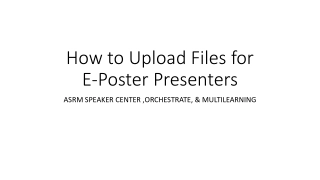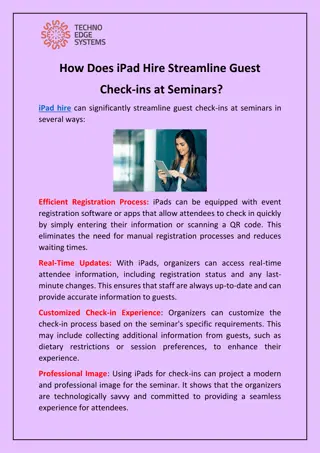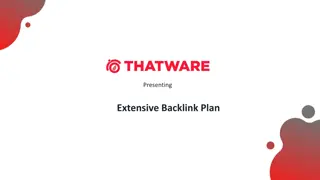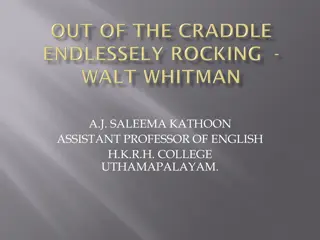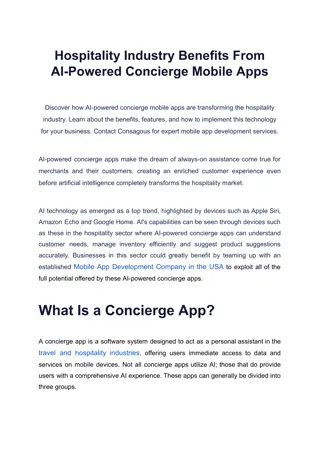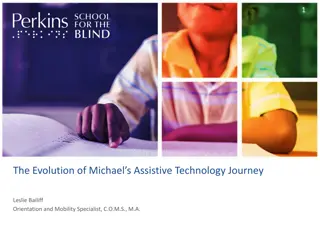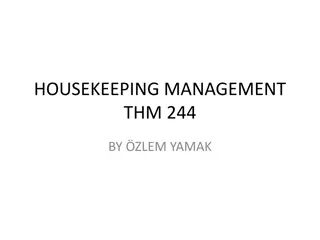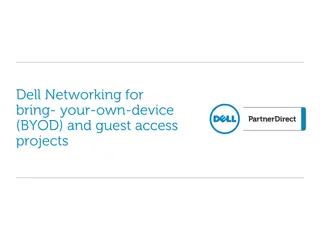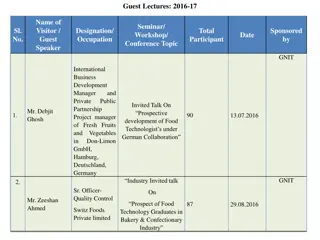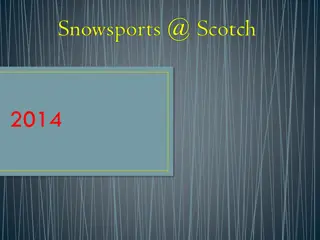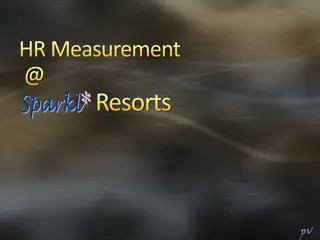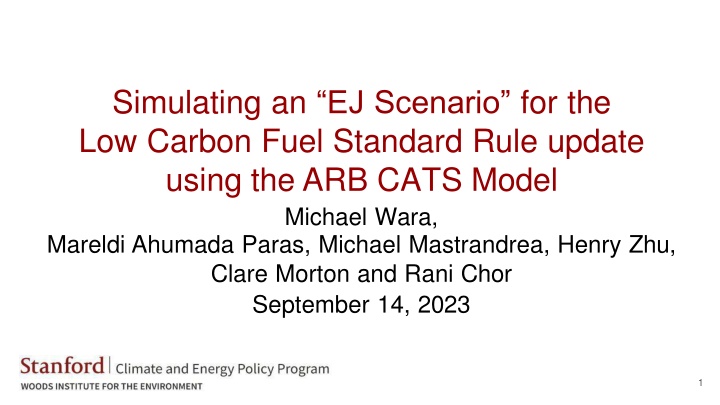
EJ Scenario Modeling for Low Carbon Fuel Standard Rule Update
Conducted by a team working with EJ advocates, the simulation using the ARB CATS model evaluates the impact of EJ policy adjustments on the Low Carbon Fuel Standard Rule. Key requests include end avoided methane crediting in 2024 and imposing a cap on biofuel crop feedstocks. The focus is on understanding the implications of these changes, considering both local impacts to EJ communities and potential GHG reductions.
Download Presentation

Please find below an Image/Link to download the presentation.
The content on the website is provided AS IS for your information and personal use only. It may not be sold, licensed, or shared on other websites without obtaining consent from the author. If you encounter any issues during the download, it is possible that the publisher has removed the file from their server.
You are allowed to download the files provided on this website for personal or commercial use, subject to the condition that they are used lawfully. All files are the property of their respective owners.
The content on the website is provided AS IS for your information and personal use only. It may not be sold, licensed, or shared on other websites without obtaining consent from the author.
E N D
Presentation Transcript
Simulating an EJScenario for the Low Carbon Fuel Standard Rule update using the ARB CATS Model Michael Wara, Mareldi Ahumada Paras, Michael Mastrandrea, Henry Zhu, Clare Morton and Rani Chor September 14, 2023 1
Introduction Leads team working with EJ advocates to conduct modeling to understand impact of EJ policy asks, using ARB s CATS model. Stanford team composed of energy researchers, postdoc, graduate students and undergraduates worked to evaluate assumptions and EJ scenarios. Team members: Mareldi Ahumada Paras, Mike Mastrandrea, Henry Zhu, Claire Morton, Rani Chor. Michael Wara, JD, PhD Director, Climate and Energy Policy Program, Woods Institute for the Environment Interim Policy Director, Sustainability Accelerator, Stanford Doerr School of Sustainability Personal views; not those of Stanford University. 2 September 14, 2023
Context Setting The CATS model used by CARB evaluates the likely future transportation fuel mix incentivized under LCFS, by finding the least cost solution to meet fuel demand given a GHG constraint. We modeled the impacts of two key requests as our EJScenario assuming tightening of cap to 30% reduction in CI 1) End avoided methane crediting in 2024. (CARB proposal is 2040) 2) Impose cap on biofuel crop feedstocks. These can lead to incentives for alternative fuels that 1) have local impacts to EJ communities, 2) have questionable GHG reductions if assumptions regarding carbon intensities are inaccurate. (CARB proposal is no cap) Added Assumption: Spend banked credits September 14, 2(02C 3 ARB modeling maintains bank) 3
Context Setting We have focused on model outputs through 2030 as most reliable. We found that CARB s assumptions used for scenario development were out of date in ways that significantly drive model results. We made a preliminary update to the energy demand assumptions to reflect current ARB policy and regulation. (Scoping Plan, ACC2, ACT, ACF) CARB subsequently updated their own assumptions - largely matching our preliminary update. We have not yet update our modeling work. The CATS model used by CARB evaluates the likely future transportation fuel mix incentivized under LCFS, by finding the least cost solution to meet fuel demand given a GHG constraint. These can lead to incentives for alternative fuels that 1) have local impacts to EJ communities, 2) have questionable GHG reductions if assumptions regarding carbon intensities are inaccurate. 4 September 14, 2023
Policy Adjustments - Avoided Methane Crediting CARB s Preferred Scenario maintains avoided methane crediting through 2040. EJ Scenario: Phase-out of avoided methane in 2024. Avoided methane crediting allows for capture of methane at dairies to be credited to fossil gas use at energy facilities like refineries. Subsidizes CAFOs and use of existing refinery capacity - not green H2. 5 September 14, 2023
Policy Adjustments - Biofuel Feedstock Caps CARB s Preferred Scenario allows unlimited use of crop oils. EJ Scenario: Cap crop oils at 1.2 million DGE [ICCT 2022]. CARB suggested virgin oils as concern. Additional 500,000 acres of land needed under baseline relative to EJ. Marginal land for soy production often provided by destruction of Amazonian rainforest. ARB is not updating ILUC as part of this rulemaking. 6 September 14, 2023
Key Finding #1: EJ Scenario is Reasonable and Consistent with CARB Priorities Average Baseline Credit Price until 2030: $89. Average EJ Credit Price until 2030: $198. Banking of credits stabilizes credit price. Total Baseline EV Subsidy until 2030: $15 billion. Total EJ EV Subsidy until 2030: $34 billion. Faster and greater support for CARB EV policies 7 September 14, 2023
Key Finding #2: EJ Scenario Reduces Local Impacts Refinery Dairy Gas 1350 million gallons less biofuel produced by 2030 under EJ scenario. Reduced refinery air pollution. Total Baseline Dairy Gas until 2030: 49 million MMBTU. Total EJ Dairy Gas until 2030: 12 million MMBTU. 8 September 14, 2023
Key Finding #3: EJ Scenario Avoids Unintended Impacts Reduces land conversion emissions (forest->farm) for crop-based biofuels fuels. Reduces use of liquid biofuels that emit local air pollutants in EJ communities. Reduces use of hydrogen produced at existing steam methane reformers that emit local air pollutants. Focuses LCFS subsidy in areas most likely to produce long-run transformation of transportation sector including electrification and electrolytic hydrogen (green H2). 9 September 14, 2023
Key Finding #4: Consumer costs will matter by 2030 and should be carefully considered relative to benefits of program By 2030, ~ of LDVs are EVs under CARB planning scenarios. Mostly these will be new cars sold to more affluent consumers. LCFS is passed through to gas purchasers. Current cost of LCFS in gas price is ~$0.10/g If credit price was $200 today, cost of LCFS in gas price would be ~$0.26/g Credit prices MUCH HIGHER by 2030, especially if ARB increases stringency. 10 September 14, 2023
Key Finding #4: Consumer costs will matter by 2030 and should be carefully considered relative to benefits of program Costs per gallon at the pump of current and future LCFS policies CI reduction $80/ton (current) $100/ton $200/ton 2023 -11.25 $0.10 $0.13 $0.26 2030 -20 $0.18 $0.23 $0.46 2030 -30 $0.25 $0.34 $0.69 11 September 14, 2023
Key Finding #5: ARB needs to dramatically improve measurement of methane emissions from agriculture SB 1383 sets goal of reducing methane emissions by 40% by 2030. ~55% of methane emissions come from agriculture (ARB, 2022). Current approach for estimating these emissions: a. USDA survey of cow herds once every 5y. b. 2005 personal communication with US EPA re manure management at CAFOs and consequent CH4 emissions per head. 12 September 14, 2023
Key Finding #5: ARB urgently needs to dramatically improve measurement of methane emissions from agriculture Without data, ARB and other stakeholders will lack a reliable basis for judging compliance with SB 1383 goal (40% reduction). ARB needs (monthly? annual?) farm level data from every CAFO and feed lot regarding: a. Herd size, type, age, feed type b. Manure management practice(s) With emissions factor data and better emissions estimates, regulatory options may come into focus for ARB and stakeholders. 13 September 14, 2023
Conclusions Update of assumptions to reflect rapidly changing regulations and EV adoption is critical to LCFS planning. ARB update to assumptions is similar to Stanford update. Stanford modeling suggests EJ scenario could achieve ARB goals while lowering impacts to EJ communities and potentially improving climate outcome. LCFS is a subsidy paid for by California gas purchasers. Need to evaluate internal market dynamics in terms of impacts on low and moderate income households We can t improve what we don t measure. Urgent need to better measure methane emissions in agricultural operations for SB 1383 goals. 14 September 14, 2023
Appendix: Modeling Assumptions CARB s provided scenario does not take into account ACF, ACC 2, ACT. We incorporate the impacts of these pieces of legislation into our model by updating the energy demands We assume energy demands increases for electricity, hydrogen and decreases for gasoline, diesel. 50% interpolation between CARB s provided energy demands and scoping plan energy demands. EJ Modifications: Cap biofuels + renewable diesel supply at 1.2 DGE. Change dairy gas CI from to 40 tonne CO2e/MJ In EJ scenario, we assume currently banked credits (~16 million tonnes) will be spent in the years when the credit price is most expensive. 15
Acknowledgement and Disclaimers Neither the Energy Justice Policy Practicum, the Climate and Energy Policy Program, nor any other part of Stanford take a formal position in favor or opposed to specific program design elements. Any opinions expressed or errors are solely those of the authors. 16

